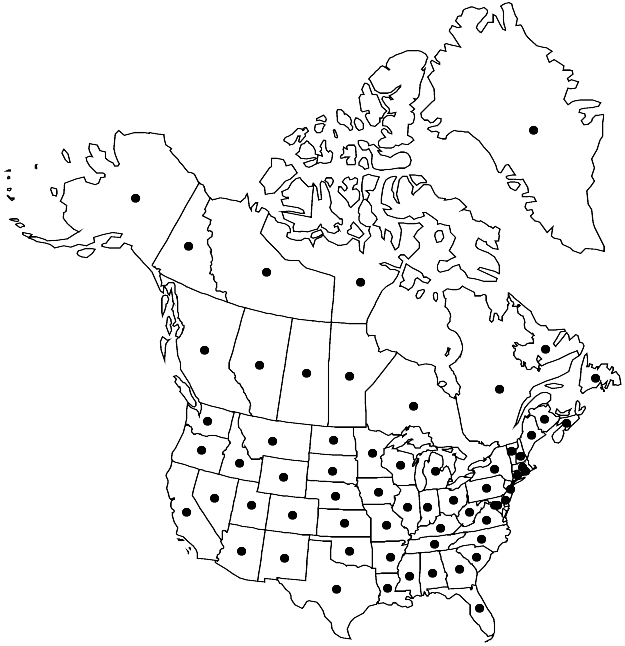Difference between revisions of "Capsella bursa-pastoris"
Pfl.-Gatt., 85. 1792.
FNA>Volume Importer |
FNA>Volume Importer |
||
| Line 10: | Line 10: | ||
|name=Thlaspi bursa-pastoris | |name=Thlaspi bursa-pastoris | ||
|authority=Linnaeus | |authority=Linnaeus | ||
| + | |rank=species | ||
|publication_title=Sp. Pl. | |publication_title=Sp. Pl. | ||
|publication_place=2: 647. 1753 | |publication_place=2: 647. 1753 | ||
| Line 37: | Line 38: | ||
-->{{#Taxon: | -->{{#Taxon: | ||
name=Capsella bursa-pastoris | name=Capsella bursa-pastoris | ||
| − | |||
|authority=(Linnaeus) Medikus | |authority=(Linnaeus) Medikus | ||
|rank=species | |rank=species | ||
| Line 53: | Line 53: | ||
|publication year=1792 | |publication year=1792 | ||
|special status= | |special status= | ||
| − | |source xml=https://jpend@bitbucket.org/aafc-mbb/fna-data-curation.git/src/ | + | |source xml=https://jpend@bitbucket.org/aafc-mbb/fna-data-curation.git/src/f50eec43f223ca0e34566be0b046453a0960e173/coarse_grained_fna_xml/V7/V7_692.xml |
|tribe=Brassicaceae tribe Camelineae | |tribe=Brassicaceae tribe Camelineae | ||
|genus=Capsella | |genus=Capsella | ||
Revision as of 22:18, 16 December 2019
Plants mostly sparsely to densely pubescent, trichomes sessile, 3–5-rayed, stellate (base of plant often mixed with much longer, simple ones). Stems (0.2–)1–5(–7) dm. Basal leaves: petiole 0.5–4(–6) cm; blade oblong or oblanceolate, (0.5–)1.5–10(–15) cm × 2–25(–50) mm, base cuneate or attenuate, apex acute or acuminate. Cauline leaves: blade narrowly oblong, lanceolate, or linear, 1–5.5(–8) cm × 1–15(–20) mm, base sagittate, amplexicaul, or, rarely, auriculate. Fruiting pedicels usually straight, (0.3–)0.5–1.5(–2) cm, glabrous. Flowers: sepals green or reddish, 1.5–2 × 0.7–1 mm (margins membranous); petals (1.5–)2–4(–5) × 1–1.5 mm; filaments 1–2 mm; anthers to 0.5 mm. Fruits (0.3–)0.4–0.9(–1) cm × (2–)3–7(–9) mm, base cuneate, apex emarginate or truncate; valves each with subparallel lateral veins; style 0.2–0.7 mm. Seeds brown, 0.9–1.1 × 0.4–0.6 mm. 2n = 32.
Phenology: Flowering and fruiting Jan–Oct.
Habitat: Roadsides, gardens, fields, barren gravel, pastures, plantations, lawns, orchards, cultivated ground, waste areas, vineyards, mountain slopes
Elevation: 0-2800 m
Distribution

Greenland, Alta., B.C., Man., N.B., Nfld. and Labr., N.W.T., N.S., Nunavut, Ont., Que., Sask., Yukon, Ala., Alaska, Ariz., Ark., Calif., Colo., Conn., Del., D.C., Fla., Ga., Idaho, Ill., Ind., Iowa, Kans., Ky., La., Maine, Md., Mass., Mich., Minn., Miss., Mo., Mont., Nebr., Nev., N.H., N.J., N.Mex., N.Y., N.C., N.Dak., Ohio, Okla., Oreg., Pa., R.I., S.C., S.Dak., Tenn., Tex., Utah, Vt., Va., Wash., W.Va., Wis., Wyo., Europe, Asia, n Africa, introduced also in Mexico, West Indies, Central America, South America, Atlantic Islands, Pacific Islands, Australia.
Discussion
According to M. Coquillat (1951), Capsella bursa-pastoris is the second most common weed on earth, after Polygonum aviculare.
Selected References
None.
